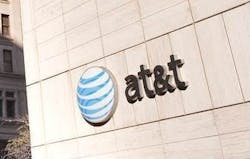As AT&T migrates more of its customers off its aging copper network, it is not only giving its customers faster speed service but also finding that it can roll fewer trucks than it did when trouble arose on its copper network.
John Stankey, CEO of AT&T, told investors during its first quarter call that the fiber transition continues to impact its bottom line.
“As our customer base continues to migrate to fiber from legacy services, our broadband support costs are decreasing, thanks to fiber's more efficient operating model, greater reliability, and higher-quality service,” he said.
However, Stankey added that AT&T will continue to look for opportunities to deploy its Internet Air fixed wireless product to areas where it can’t provide fiber service today.
“While fiber remains our focus and lead product, we continue to be encouraged by the early performance of AT&T Internet Air, our targeted fixed wireless service, which is available in parts of 95 locations,” he said. “We now have more than 200,000 AT&T Internet Air consumer subscribers, adding 110,000 in the quarter. Ultimately, we couldn't be more excited about the future of Consumer Wireline with AT&T Fiber well positioned to lead our growth and AT&T Internet Air helping us provide quality broadband service to customers where we don't offer fiber.”
Growing, extending fiber
Expanding the availability of fiber-based broadband continues to be a priority for AT&T. Over the past year, AT&T Fiber has expanded its consumer subscriber base by about 1.1 million to nearly 8.6 million customers. This includes 252,000 AT&T Fiber net additions in the first quarter.
Through a mix of fiber-based broadband and its Internet Air broadband wireless service, AT&T has continued to ramp up its overall broadband base.
“As a result of our established fiber success and early AT&T Internet Air subscriber growth, we've grown our consumer broadband subscriber base for three consecutive quarters,” Stankey said. “And we expect this trend to continue.”
As seen in earlier quarters, AT&T continues to find that where it offers fiber services, it is seeing complementary mobile wireless growth. “Where we have AT&T Fiber, our strong national 5G wireless brand provides us the opportunity to be customers' single converged provider, seamlessly connecting them both in the home and on the go,” Stankey said. “We're able to deliver convergence at a level that none of our peers can match as we're the only provider that benefits from owners' economics.”
Looking forward, AT&T maintains that it is on track to pass 30 million-plus consumer and business locations by the end of 2025.
“As we've stated before, the better-than-expected returns we're seeing on our fiber investment potentially expands the opportunity to go beyond our initial target by roughly 10 million to 15 million additional locations,” said Pascal Desroches, CFO of AT&T. “This also assumes similar build parameters and a regulatory environment that remains attractive to building infrastructure. It's important to note that as we continue to build out our network this year, we expect to have lower vendor financing payments while increasing the total investment we make directly into our networks as we continue to invest in fiber expansion and wireless network transformation.”
He added, “We expect our total capital investment and intensity to decline this year even as we boost investments in our network.”
Fiber drives broadband growth
Fiber was the key driver in AT&T Consumer Wireline's first-quarter results. AT&T had 252,000 AT&T Fiber net additions during the quarter, which aligns with the company's outlook.
“This is the 17th consecutive quarter with AT&T Fiber net adds above 200,000,” Desroches said. “We now have fiber penetration of 40% with several markets well above that level.”
Broadband revenues grew 7.7%, including 19.5% fiber revenue growth. AT&T expects broadband revenue growth of over 7% for the full year. Fiber ARPU of $68.61 was up more than 4% year-over-year, with intake ARPU remaining above $70. Consumer Wireline EBITDA grew 14.6% due to growth in broadband revenues and ongoing cost transformation.
“We now expect Consumer Wireline EBITDA to grow in the mid-to the high single-digit range this year, driven by continued strong fiber revenue growth and disciplined cost management, partially offset by continued legacy copper declines,” Desroches said.
For more news, products, and technical profiles in broadband cable and telecommunications technology, subscribe to BTR's newsletter and follow us on LinkedIn, Twitter, and Facebook.
